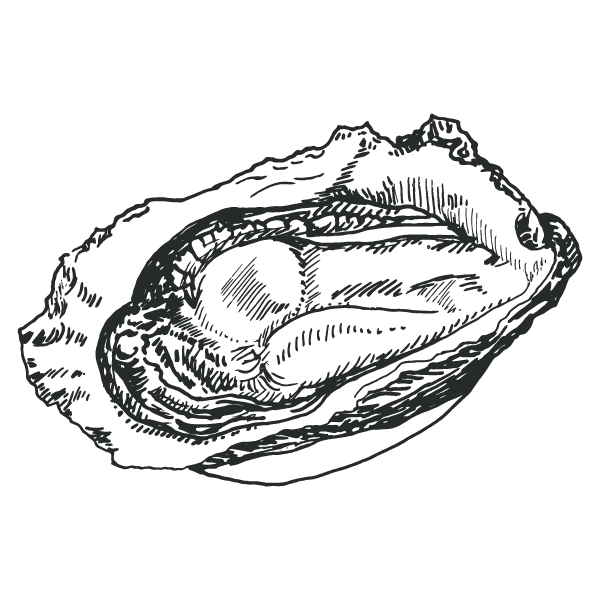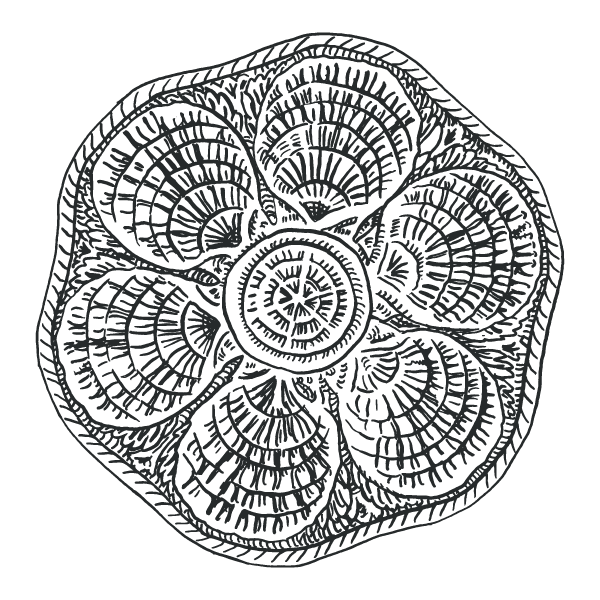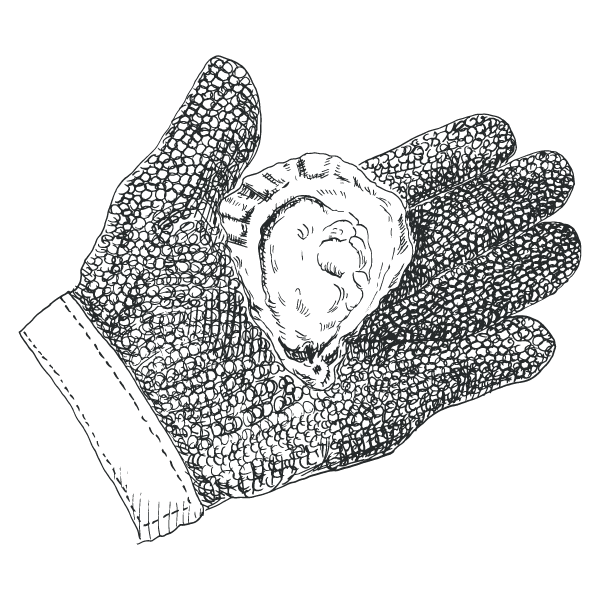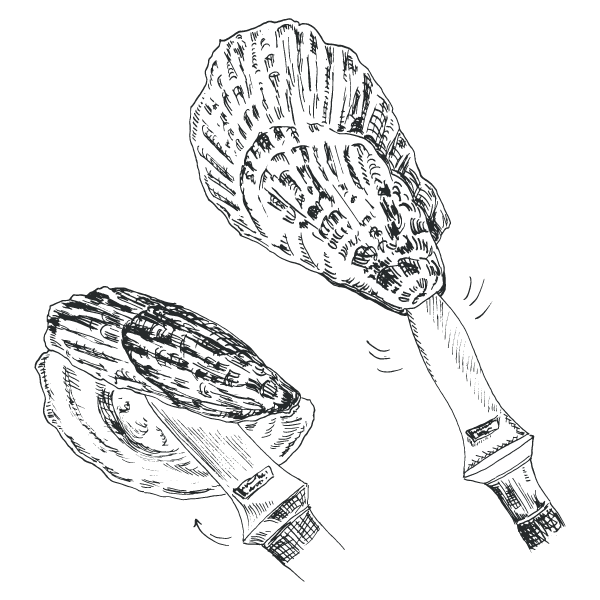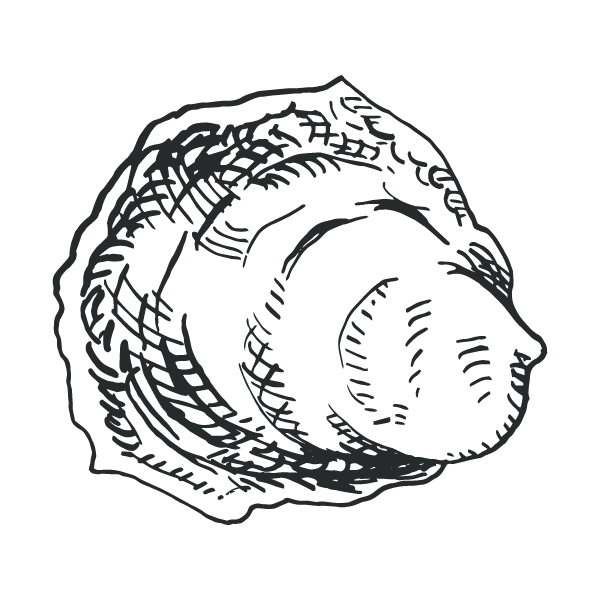
WT FEATURES
Oysters
ALL YOU NEED TO BECOME
A BIVALVE CONNOISSEUR
The Oyster
A food for bravehearts, culinary geographers, slurpers, texture seekers, environmentalists, literary geniuses, and romantics, among many others, the oyster has indelibly captured the world’s attention. It is a very good time to be a bivalve connoisseur.

For 2000 years, oysters have been cultivated and prized for their unadulterated, tender, plump taste of the sea. The subject of mythology and folklore, beloved bivalve stories travel the continents. Born from oyster sea foam, the Greek goddess Aphrodite emerges from the Ionian Sea on an oyster half shell and is forever more associated with a unique ability to stimulate more than just the appetite. In 1864 on a visit to San Francisco, Mark Twain felt compelled to “destroy oysters done up in all kinds of seductive styles”. His choice of language is no accident.


Oysters on the Palate
A great celebration food, the meaty bivalve is just as delicious slurped with beer as it is with champagne. The flavor and texture of each of the five oysters species fluctuates by region and growing conditions. Much like the way vintner’s grow grape vines and understand the effect of water, sunshine, the mineral content and chalkiness of the soil, oyster growers notice a nuance of taste and texture of oyster meat depending on the salinity, type of algae growing and the minerals in the water. Significant rainfall, or oysters grown near freshwater, tend to taste less briny. East and West coast oysters, while equally delicious in their own right, also show shell and taste differences. Bigger, brinier, and with stronger mineral notes and chewier texture, East Coast oysters are flatter, often bigger, and rounded edges. Their West Coast cousins for the most part have deeper pockets and more jagged edges with fruit and seaweed nuanced flavors—melon and cucumber the most common flavors associated with these sweeter, less briny, and more creamy textured mollusks.

Know your Oysters
There are five common species of oyster you're likely to encounter: learn how to recognize them, and which ones to look out for.

OYSTER PLATES
Since the 18th century, oyster plates have been produced. Once a luxury for nobles and those few who could afford specialized dinnerware, oyster plates have become utilitarian artwork that tell economic, political, historical, cultural and geographic stories.


The WT collection of oyster plates is a curated selection of Old World and fine handmade American new oyster plates. The vintage and antique ceramic and porcelain hand painted bivalve plates that include works from an apprentice to 19th century George Jones (one of the world’s most famous majolica artists) and World War I and II pieces that reflect war and peace. Works produced by artists standing shoulder-to-shoulder with Picasso in the famous Vallarius, France ceramics studio showcase avant- garde cubism, Picasso’s blue period, and the artist’s spanish influence on the art of his northern neighbors. Some of the earlier works produced by the world’s most prestigious ceramics factory, Minton, that in 1793 began sharing the art of porcelain and ceramic making to westerners from technology imported from China, continues today to be the oyster plates by which the quality and beauty of all others are measured.

In A Geography of Oysters, Rowan Jacobsen notes: "Different oysters suit different occasions and different people. If you haven’t yet been wowed by oysters, you may well have been dallying with the wrong ones.” His lively ode to bivalves is intent on coaxing out the oyster eater in each of us:
THE SWEET TOOTH
Salt? Yuck! But there is nothing quite so divine as the creamy sweetness of a superplump oyster. Forget Eastern oysters.
THE GRAIL SEEKER
Wellfleets? Westcotts? Been there, done that. You’ve had all the common oysters and want to taste new ones no one has heard of. And you’re willing to travel.
THE WILD ONE
Forget those hatchery-raised wimps, you want a natural-set oyster that survived the one-in-a-million journey from egg to adult.
THE JEWELER
You eat with your eyes as much as your belly, and you love the gemlike shells of some oysters.
THE WINO
Those potent, briny, musky oysters are as overblown as an Australian Shiraz. You like to savor oysters with wine, so you want subtle mineral flavors, not metal and salt and mud.
THE CONNOISSEUR
You want the best oysters in the world, price be damned.
THE BOLD
Bring on the tangiest, muskiest, biggest, most challenging oysters possible. You don’t scare easy.
THE CLEAN FREAK
You prefer filter feeders from pristine waters.
THE MINISTER OF SILLY NAMES
For you, half the fun is the goofy things oysters are called.
As I ate the oysters with their strong taste of the sea and their faint metallic taste of that the cold white wine washed away, leaving only the sea taste and the succulent texture, and as I drank their cold liquid from each shell and washed it down with the crisp taste of wine, I lost the empty feeling and began to be happy and to make plans.
ERNEST HEMINGWAY


Give me oysters and beer, for dinner every day of the year, and I’ll be fine.
JIMMY BUFFET








